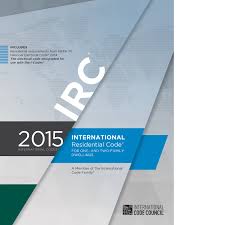
Last week, in Unvented Crawl Spaces, Part II, we looked at the code section for closed crawl spaces and one process for approaching a closed crawl space using closed cell foam.
This week we are going to talk about some of the building code requirements for foam plastic insulation.
In accordance with both the International Building Code and the International Residential Code, that’s IBC Section 2603 and IRC Section 316, all foam plastics are required to be separated from the interior of the building by a 15-minute thermal barrier, like 1/2″ gypsum.
This applies to all foam plastics, regardless of fire properties. So, spray polyurethane foam is treated the same as EPS foam board, even though they have significantly different fire characteristics.
Think about it, what happens to an EPS foam cup, a foam coffee cup, when it burns? It melts and drips, right?
This can be scary, and rightly so.
Back in 2003, the band Great White was playing at a night club in Rhode Island, and they wanted to put on a good show. So they had a pyrotechnics display that they set off as part of the experience – to really get the crowd pumped up and excited; but this night turned into disaster.
When the pyrotechnics were set off, some of them struck the ceiling inside the night club and caught the foam insulation on fire. This foam plastic was not code compliant, the insulation was not properly fire protected and it was EPS.
It caught on fire, spread quickly, and we know that EPS melts and drips. By the time fire fighters showed up, it was a losing battle.
Other issues were involved, overcrowding and blocked exits, but in the end 100 people lost their life and another 230 were injured.
This is some of the stigma surrounding foam insulation.
But spray polyurethane foam burns differently, it chars and flakes, it does not melt and drip; and in my experience, spray foam will not propagate a flame. This means that when the flame source is removed the fire goes out.
Well, back to the thermal Barrier. All foam plastic is required to be covered by a thermal barrier and I like to think of it as protecting the foam from the “dumb” things people do inside combustible buildings, like burn little sticks that they put in their mouth, start fires inside the building to stay warm and setting off pyrotechnics, inside, for fun.
Yes, the buildings you build are combustible. Yes, the buildings you live in are combustible. The wood burns, the carpet burns, the curtains and drapes burn, and yes the foam burns, so we cover the wood and the foam with crushed rocks that don’t burn as fast.
That is the thermal barrier.
But there are about ten exceptions to the thermal barrier requirement, this includes attics and crawl spaces.
In attics and crawl spaces, that are limited to the service of utilities, the foam doesn’t have to be protected by a thermal barrier, instead you can use an ignition barrier. And rather than defining ignition barrier, the code specifically lists eight ignition barrier products:
- 1 ½” mineral fiber
- ¼” wood structural panel
- ⅜” particle board
- ¼” hardboard
- ⅜” gypsum board
- 0.016″ corrosion resistant steel
- 1 ½” cellulose insulation
- ¼” fiber cement panel
So, these are the prescriptive options to protect foam plastic in an attic or crawl space with access limited to the service of utilities.
But if access goes beyond service of utilities, like for storage, then the requirement goes back to a thermal barrier.
This covers the prescriptive protection of foam plastic in accordance with the building code.
Stay tuned next week as we take a look at alternate options based on special approval testing and we continue to explore the interesting world of spray foam insulation.
Subscribe here to keep in touch with Spray Foam Advisor and get your FREE copy of 25 SPF Frequently Asked Questions and a PRIVATE link to Robert Naini’s SPFA Breakout Session, “3 Ways to Close More Sales with Building Science.”


